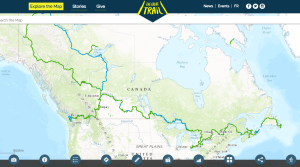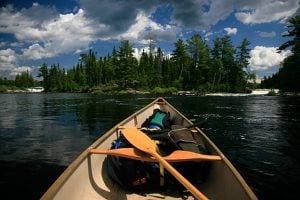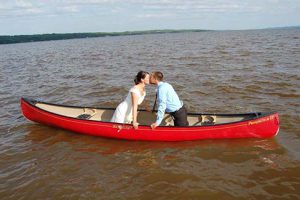Next, the group travelled about 400 kilometres to the southeast to Cohoes Falls. Looking back in time, Norma explains the Mohawk Nation there was initially reluctant to believe the Peacemaker was truly sent by the Creator and so they devised a plan to test him. The Mohawks challenged the Peacemaker to climb up a towering tree at the crest of Cohoes Falls. They intended to chop down the tree once he reached the top and “said that they would accept his word if he survived that fall.” The Peacemaker, knowing the Creator was on his side, accepted the challenge and allowed the Mohawks to plunge him over the falls and out of sight.
Jacobs explains, “a few days later, they went and here they seen the smoke rising from across the river.” The Mohawks saw the Messenger tending to a fire without a scratch and, true to their word, became the first to accept his message of peace. “He was being challenged, you know, to his truth and he was able to convince people that he did have this great message for our people.” The region is also historically significant as a place of strategic importance for messengers and warriors running between the different villages.
“I could just imagine how many runners had come through that place and how they gathered and would sit there and have their meal,” says Jacobs. Just as she would thousands of years later —feeling the presence of the old ones.
They continued to Oneida where they learned about the harm the battles between the English and the French had inflicted on the Confederacy. “From what I was told,” Jacobs says, “that was the last place that the Confederacy had come together to work together and to have a condolence for raising up the chiefs.” The condolence ceremony governs the succession of leaders while recalling the Peacemaker’s condolence of Aiionwatha. Having suffered the loss of his wife and daughters as a result of the bloody feuds between nations long ago, Aiionwatha fell into a deep depression and wandered aimlessly in despair. Until one day, the Peacemaker found him smouldering in his grief. The Peacemaker conducted a ceremony of condolence, to help Aiionwatha reconcile with his inner torments. The condolence of Aiionwatha is imbued in the Great Law of Peace; a remembrance of Aiionwatha’s great overcoming of loss and suffering while he sought a greater peace for all, each time a new leader is raised.
The Great Tree of Peace, a white pine, stands at Onondaga, the capital of Haudenosaunee territory. “You can still see that on a white pine tree, you’ll find a cluster of five needles,” says Jacobs, which represents each of the original Five Nations. “That’s really a powerful message for our people to think about — that our history is even recorded in this pine tree.” It is the chief symbol of peace and is often featured in Haudenosaunee artwork and clothing. Its roots run deep along the four cardinal directions across Turtle Island, extending the invitation of peace and harmonious relations to neighbouring Nations.
“I think that it’s another symbolism of our people, to look at the values of what the Peacemaker brought in order for us to create peace, which is working together and having compassion and understanding for each other and taking care of one another,” says Jacobs. “Sharing, you know, and having that strong belief in who we are.”
It is said that, when cut, the tree would either bleed or it would run clear. The Peacemaker said that if it ran clear, he was still nearby. If it bled, he was not.








